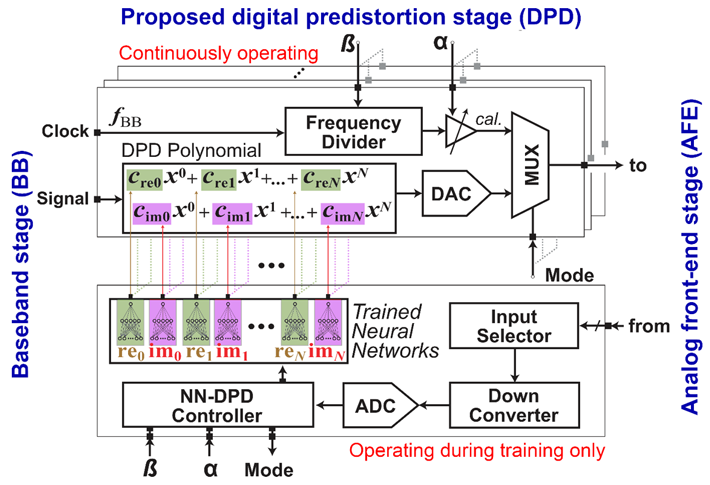
Professor Shim Jae-won’s group from the School of Electrical Engineering and Professor Lee Sae-youn’s group from the Department of Energy & Materials Engineering at Dongguk University jointly developed an essential technology for near-infrared organic photodetectors with an extremely low level of noise at an atto-scale.
An organic photodetector (OPD), which is a central element of a photosensor, can efficiently utilize light to generate electricity and detect the motion of objects. OPD plays an important role in next-generation infrared sensor technology (autonomous driving, optical communication, surveillance monitoring, etc.) because of its solution-based low-temperature manufacturing process, high scalability, and excellent near-infrared light sensitivity characteristics.
However, since the narrow bandgap of the near-infrared absorption band materials generates an undesirable high-noise current and limits the specific detectivity (D*) of an OPD, major improvements are required for its practical use. Therefore, it is necessary to analyze the generation mechanism and charge dynamics of the dark current density that causes noise, and to develop a low-noise near-infrared OPD based on this analysis.
In order to resolve this fundamental problem, the research team developed and applied a newly synthesized self-assembled monolayer-based electron blocking layer (EBL) of 3PAFBr to effectively block the thermally generated current generated in the organic semiconductor layer. Through a quantitative analysis of the generation mechanism of the dark current, the researchers developed an atto-scale, ultralow-noise near-infrared organic optical sensor.
The 3PFABr-based EBL, which contains two phosphonic acid (PA) groups, significantly suppressed the formation of interfacial traps in the OPD by forming a more homogeneous electrode surface and a higher work function through the enhanced anchoring capability. In addition, the level of thermal activation energy, which is the main source of dark current generation, was similar to the difference between the lowest unoccupied molecular orbital (LUMO) energy of the organic semiconductor and the highest occupied molecular orbital (HOMO) energy of 3PAFBr, and the low HOMO energy level provided significant insights into the high energetic barriers involved and the dynamics of bulk thermally generated dark current density.
Through this process, the 3PABr-based OPD achieved a noise current of 852 aA and a noise equivalent power (NEP) of 4.18 fW (at wavelength of 808 nm), which is the lowest reported value among ultralow-noise OPDs. Moreover, this is markedly lower than the noise current (59.4 fA) and NEP (264 fW) of commercial silicon photodetectors.
This achievement constitutes innovative and original research in the field of organic optoelectronic devices and opens up new possibilities for low-noise near-infrared organic photosensor technology. In addition, it shows the potential for its extensive adoption through the development of related devices in various fields such as autonomous driving sensors, smart homes, and Internet of Things (IoT) sensor devices.
This study was supported by the National Research Foundation of Korea, funded by the Ministry of Science and ICT.
